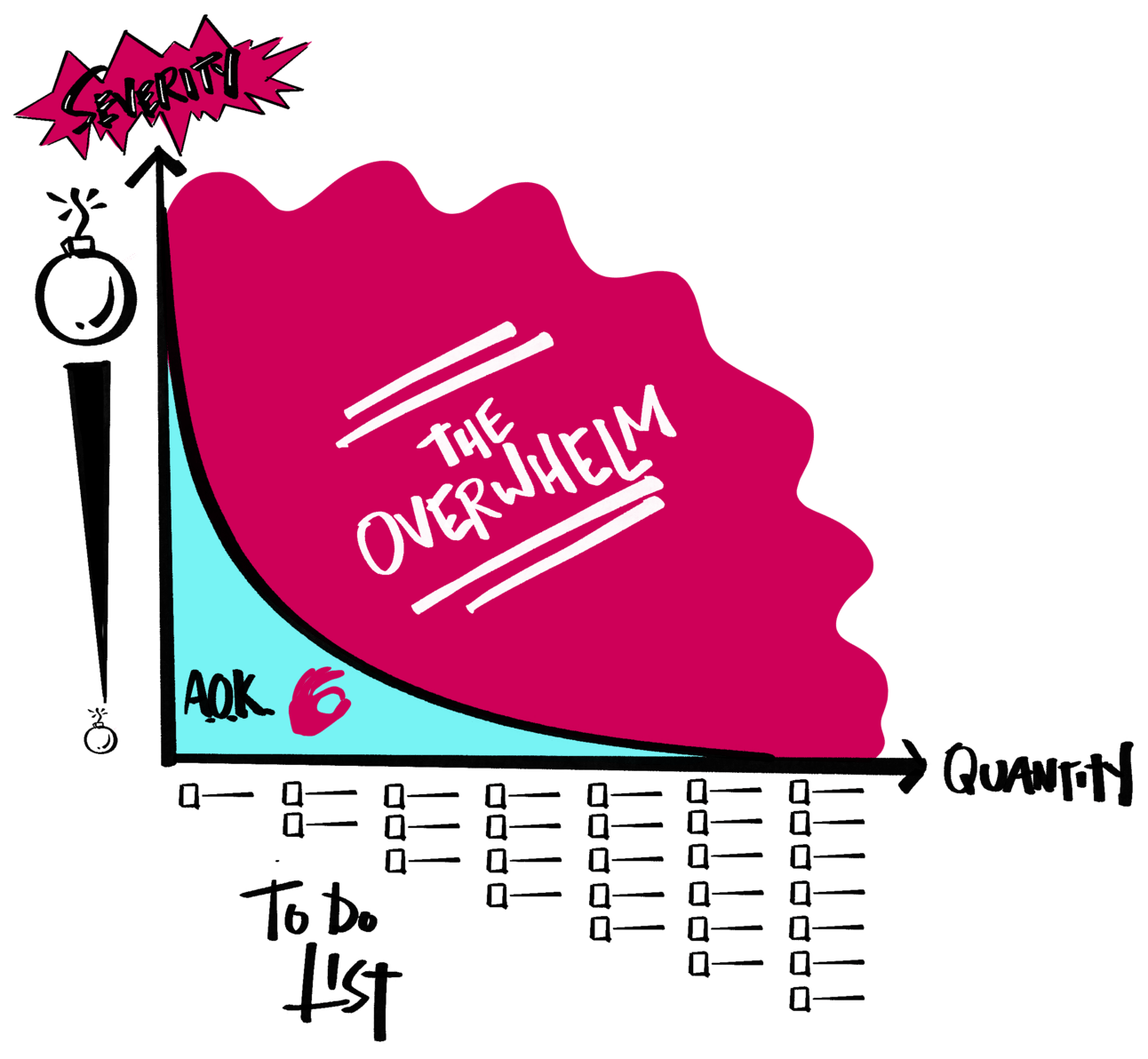Happy Tuesday {{first_name|to you}}!
We’re hearing from more people about feeling overwhelmed at work. Today we want to share a simple collaboration technique that teams can use to begin taming that overwhelm. Just want the download? Here you go.
BLUF
Why: Teams feeling overwhelmed at work need a simple way to reduce their stress and anxiety levels.
What: Creating a collaborative team map can reduce workplace stress by providing the clarity your team needs to get organized and refine your priorities.
MVC Guide: Instructions and examples showing how to make the map, explore it together, and turn the talk into action.
Creating a collaborative team map is an MVC approach to the problem.
MVC: Minimal, Valuable Collaboration.
MVC techniques are simple to use, apply to any team, work without any special tools or technology, and yield asymmetric returns on the time invested. Minimal refers to the effort required to learn and use these techniques, not their value. You can use MVC techniques like the collaborative map as a starting point in a workshop, or to kick off a more organic conversation in your everyday, regular team meetings. Check it out.
In our last article, we explored what it means to be overwhelmed at work, and how there are two parts to it:
A whole lot of something you need to deal with and
Feeling like it's too much so you can’t deal with it.

Overwhelm can come from too many ToDo’s, from the severity of any one task, or a combination of both
If you look up what to do when you're feeling overwhelmed, you'll find several methods that all share these basic steps.
Pause. Realize your feelings are common and that you're not alone.
Take a deep breath. Physiological sighs ftw!
Make a list of everything that's overwhelming you. Get it out of your head and somewhere that you can begin to feel more control over it.
Organize the list into categories. (The categories vary based on who's framework you're using.)
Take action. Do one thing at a time, and get that off your list.
This process implies that, once you get organized, it's simply a matter of marching one step at a time toward the blissful Land of Done, where all the to-dos are ta-Done! and you can chillax with a fruity drink.

Watch out! Relax too much and you might be absorbed right into your chair! This happy dystopia was brought to you by DALL•E.
Of course, no such place exists on this side of the pearly gates. If you're breathing and building, there are things to do. So no matter how clever our system is or how much we optimize our team productivity, we're never going to cross off all the things on our lists.
Getting everything done is a myth. It will never happen. And that's ok!
We don't need to deal with all the tasks to reign in overwhelm. We need to feel like we can deal with them, and see the path forward.
This is good news because both the academic research and experience from practice show that we get this benefit at step 3: getting the list out of our heads and into a format where we can see it more easily.
Put simply, uncertainty is upsetting. Making the list reduces uncertainty and makes a promise that someone (probably your future self) will take care of these items. It also makes it much easier to select what to do next.
Teams Need Maps, Not Lists
Most productivity advice is for individuals. At work, however, we work with whole teams of people who might be struggling with a collective sense of overwhelm.
The advice for individuals doesn't translate directly to teams. Imagine what would happen if everyone on your team were to list out everything that's overwhelming them in one long bulleted list. Do you think that would help?
Yeah, me either. That inventory of pain isn't going to make anyone happier.

If you printed out the combined to-do list for everyone in your company, how far would it stretch? To the moon and back? What a terrifying bedtime story that would be. Thanks again, DALL•E
Instead, teams should create a map. With a map, teams add items one at a time and visually group similar items together.
Maps are not to-do lists. Maps are a super simple, organically structured way to visualize your work, making it easier for you to see exactly what you're dealing with.
Maps show:
How your work overlaps, and opportunities to streamline it.
Who's taking care of what, so you don't have to worry about it.
Any off-track tasks that have crept in so that you can drop them.
Where things may be slipping through the cracks.
Once the map is assembled, you can:
Focus the team on one section at a time, further reducing the overwhelm.
Move things around to answer new questions
Take items off, add new ones, or ignore them entirely.
Funnel items on this organic map into a structured visual framework for developing your strategy, setting priorities, and managing tasks.
Come back to it any time your workload or priorities change

Image credit DALL•E